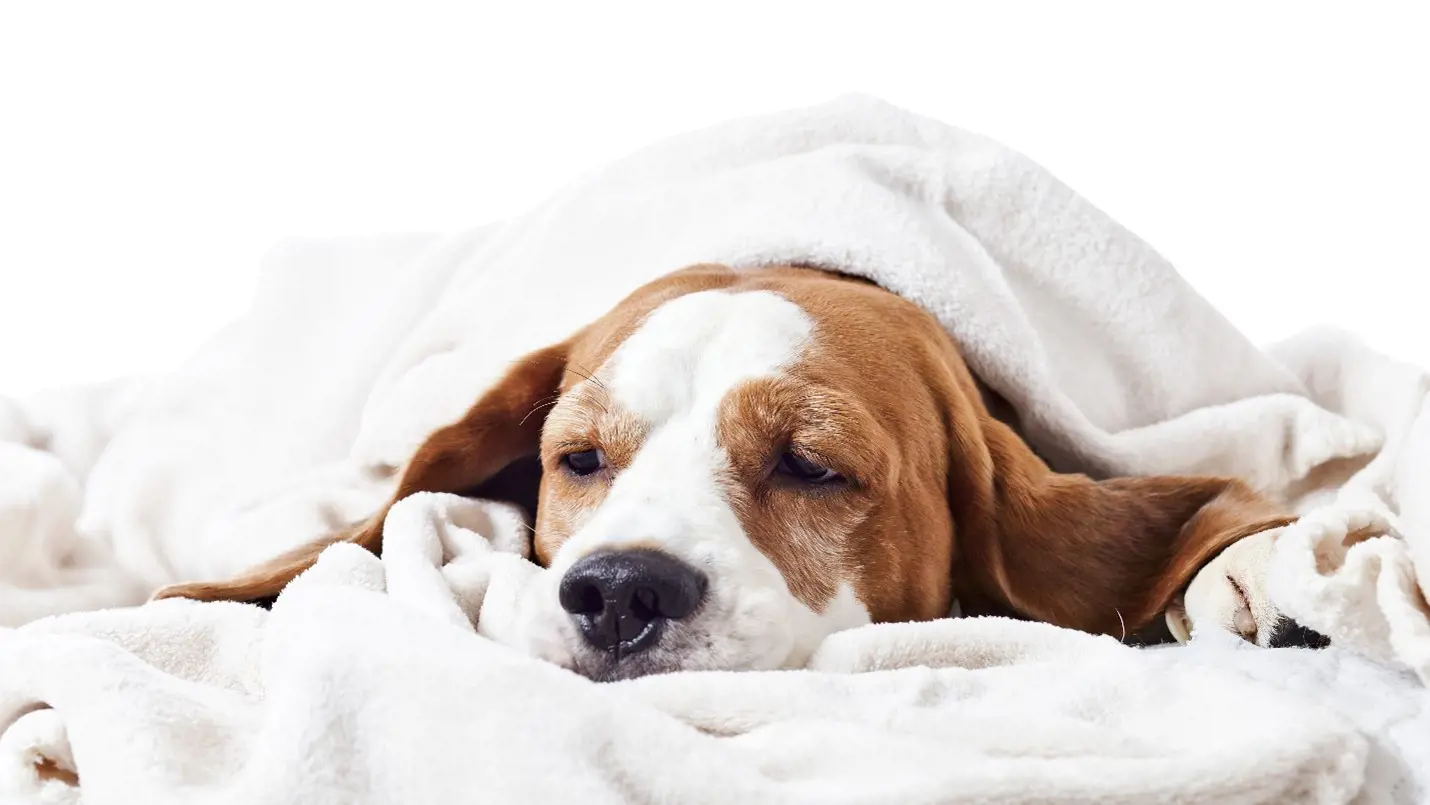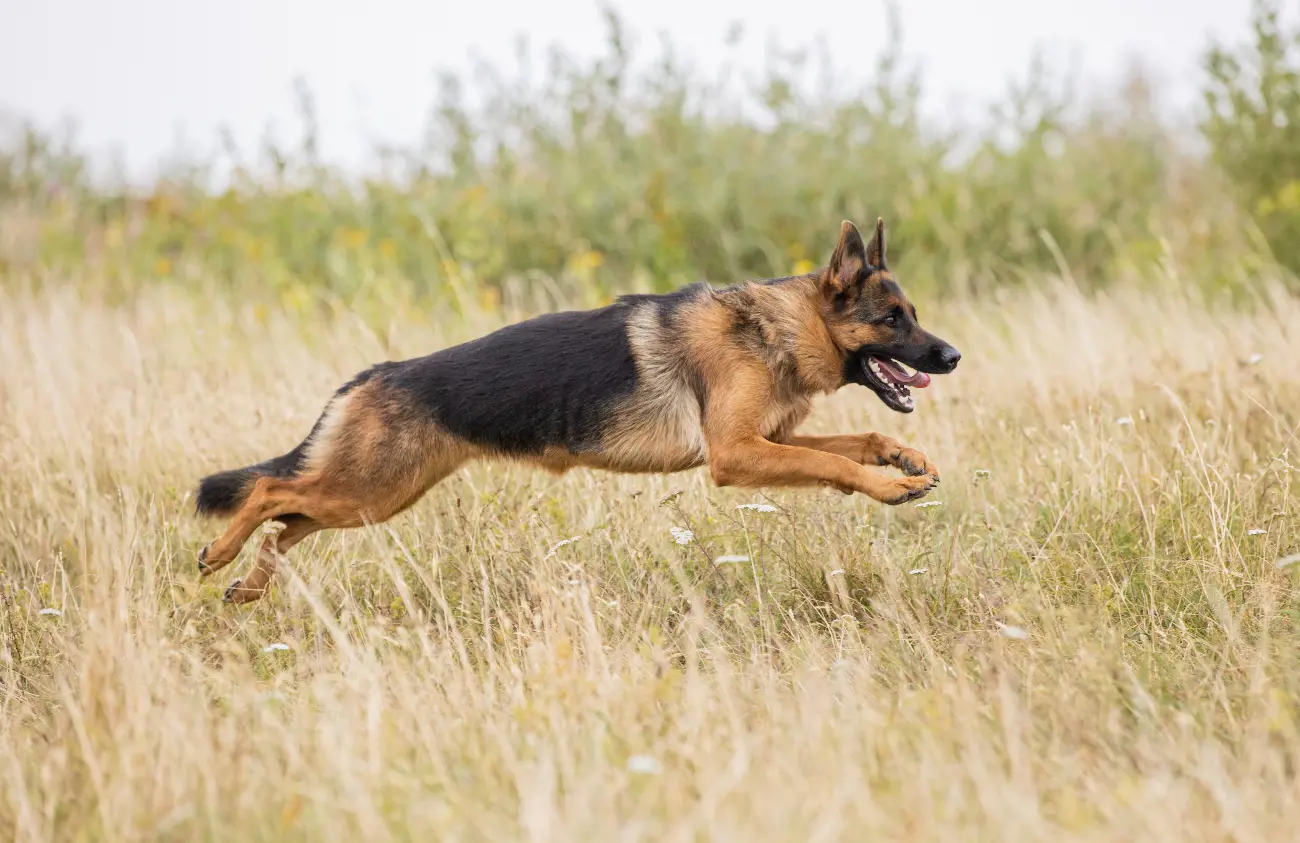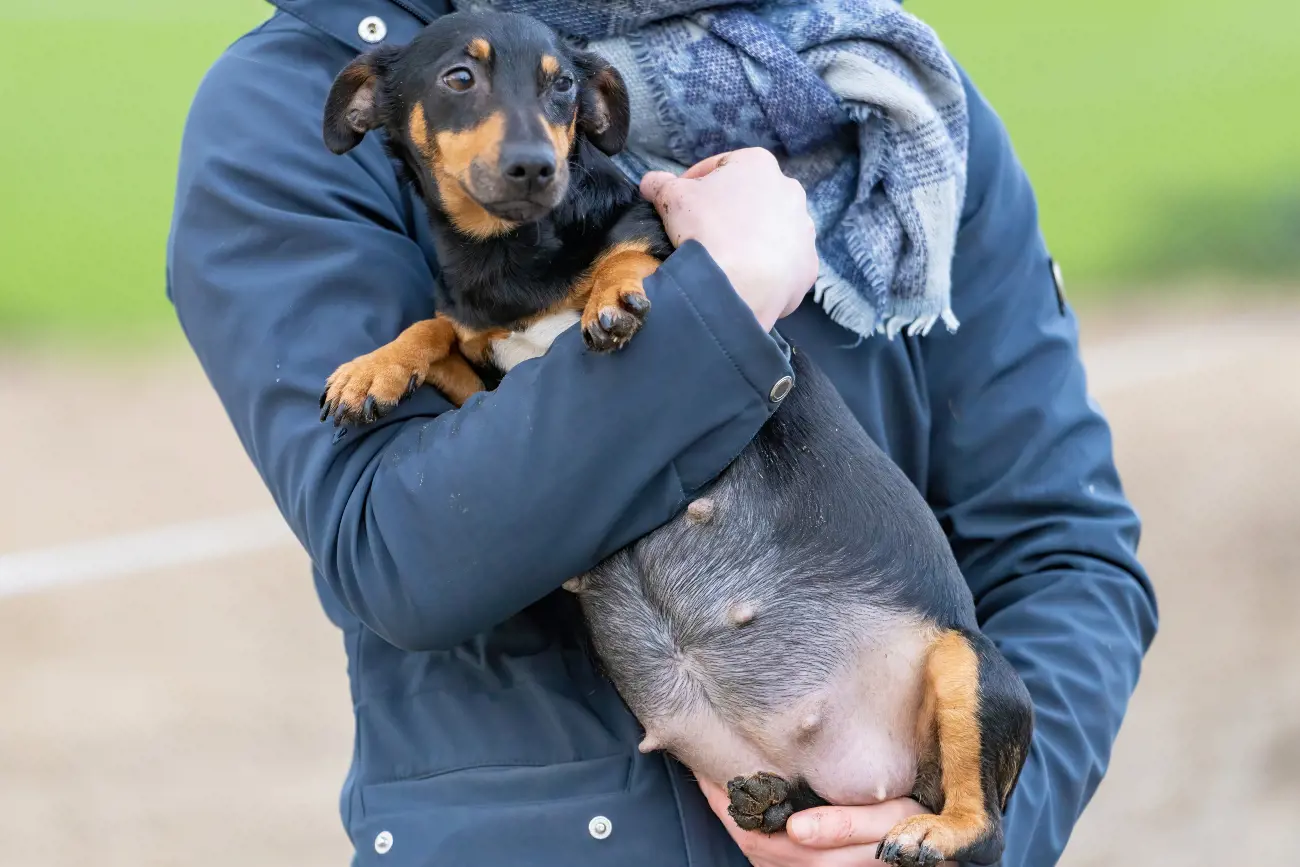How to help fix your dog’s eating habits
24th May, 2023
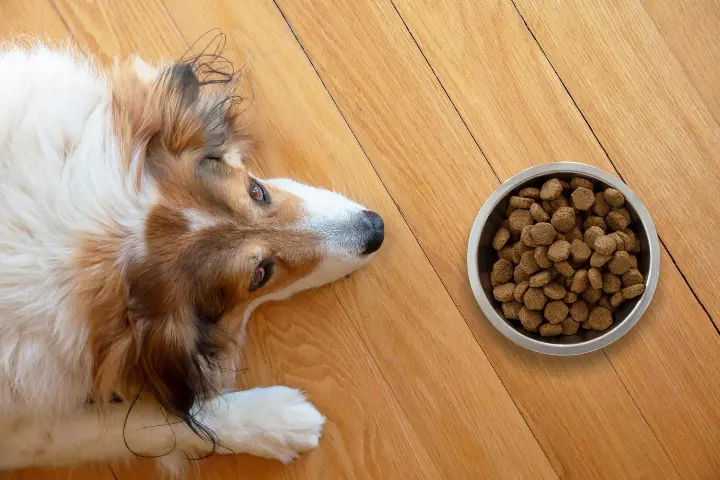
It's no secret that dogs can be incredibly enthusiastic eaters. But when their eating habits become too fast, it can lead to many problems. From bloating to weight gain, it's important to keep your pup's eating habits in check.
In this article, we'll discuss why does my dog eat so fast and how to stop a dog from eating too fast. We'll also provide you with practical tips and solutions that can help you slow down your dog's eating habits.
Why does my dog eat so fast?
There are a few reasons why your pup might be eating too fast.
The most common reason is that your pup is hungry. If your pup is used to waiting for their food, they might be eating too fast out of anticipation.
Another reason why your pup might be eating too fast is competition. If you have multiple dogs in the house, they might be competing for the food. This can lead to a race to the bowl, and one pup might end up eating faster than the other.
The answer might also be simpler than you think, some breeds are just naturally faster eaters. Breeds like Greyhounds and Whippets are known for their speed, and this trait can extend to their eating habits.
Benefits of slowing down your dog's eating habits
Encouraging a bit of patience with your dog's eating habits is one of the most beneficial things you can do for your furry friend.
There are numerous benefits to slowing down your dog's eating habits, ranging from improved digestion to better behaviour.
First, a more relaxed approach to your dog's eating habits can help to improve their digestion. Eating quickly can lead to indigestion and other uncomfortable ailments.
If your dog takes longer to eat, it gives their stomach time to process the food and make sure it's digesting properly. This can reduce the risk of indigestion, vomiting, and other digestive issues.
Second, slowing down your dog's eating habits can help to improve their behaviour. Poor table-side manners may overlap into your dog’s behaviour outside of dinner time!
If your dog is eating too quickly, they may become irritable and easily distracted. Having your dog spend a longer time focusing on tasks and not rushing can help to alleviate these behaviours.
Third, if your dog takes longer to eat their meal, this might help to prevent them from overeating. Slowing down their eating will give them more time to recognise when they are full and prevent them from eating too much.
Changing your dog's eating habits may also help to reduce the risk of choking. If your dog is eating too quickly, they may accidentally inhale their food, which can lead to choking. Emphasising patience with their eating habits will give them more time to chew their food properly, which can reduce the risk of this happening.
Slowing down your dog's eating habits can be an incredibly beneficial thing to do for their overall health and well-being.
The Benefits of your pet not scoffing down their meals faster that you can get your knife and fork out can range from improved digestion to better behaviour, and can help to prevent them from overeating and choking.
It may seem like a small aspect of your dog’s overall mood and behaviour at first but training your dog to eat at a slower pace can benefit your beloved pet in more way than you might have first thought!
Steps to take to slow down your dog's eating habits
There are a few steps you can take to slow down your dog's eating habits. The first step is to make sure your pup has plenty of time to eat.
If you typically rush your dog out of your home to take them on a walk as soon as they’ve finished eating, you may be inadvertently rushing your dog to finish its food so they can enjoy the outdoor world just that little bit quicker.
Another step you can take is to provide smaller meals more frequently. This can help your pup feel fuller throughout the day, which can help them eat more slowly.
Additionally, you can also try hand-feeding your dog and combine these two methods to see if this makes a difference to your dog’s eating habits.
Hand-feeding your dog puts you in control of how much they can eat and how quickly they’re given their food as well. Now, this may not be a sustainable long-term strategy.
However, this will start to reinforce the importance of patience and delayed gratification and allow you to start building up your dog’s habit of eating a slower pace.
You may also find using a slow-feeder bowl to be helpful as well. These bowls are designed to slow down your dog's eating habits by releasing food at regular intervals rather than giving your pet all their food at once.
Dog bowls to help slow down your dog's eating habits
There are a few different types of slow-feeder bowls that can help slow down your pup's eating habits. One of the more common types is an elevated dog bowl.
These bowls are designed to raise your pup's food off the ground, which can help slow down their eating habits by turning their eating experience into bit more of a challenge. It’s important to find an elevated bowl that isn’t too far out of your little friend’s reach but tall enough so that your dog can’t stand directly over the bowl.
Having the bowl slightly more elevated will make reaching the far-end of the bowl just that little more difficult to reach if your dog is standing in one position. This will push your pup into walking around to the other side of the bowl to finish off their meal.
Another type of slow-feeder bowl is a puzzle bowl. These bowls are designed to make your pup work for their food by working through a relatively easy puzzle. They come in a variety of shapes and sizes, and they can help your pup eat more slowly by giving them a task to complete before they are rewarded with their meal.
Now, if you own a bigger breed of dog, they might end up either breaking the puzzle feeder (which has happened to me before!) and the puzzle element of the slow-feeder bowl becomes less than usable.
If you’re interested in trying one of these bowls out, make sure you’re getting one that can stand the test of time (and aggression) especially if you have a larger dog in the house.
You can also try using a slow-feeder mat. These mats are designed to spread out your pup's food onto the mat provided so that your dog’s meal is dispersed into smaller chunks.
The idea behind this is to have your pet’s food spread over the mat so that your dog has to go from one chunk of dog food to the other which will slow down their time that they’re able to finish their meal and also spread out the amount of time that they have to finish their food as well.
Training your dog to not rush to eat
The best way to do this is to use positive reinforcement. Whenever your pup waits patiently for their food, reward them with treats or praise.
Doing this consistently can help your pup learn to wait for their food, which can help them eat more slowly.
Another tip is to use body language. If your dog starts to rush for their food, use a firm "no" and point away from the food. This can help your over-excited furry friend understand that they need to wait for their food.
Establishing patience and respect between the owner and pet will stand you in good stead for dealing with behavioural issues overall.
Once you’ve built up this relationship with your dog, you’ll find that they will become more obedient to your commands and allow for you to teach them how to slow down the pace of their eating just that little bit more easily.
The benefits of hand-feeding
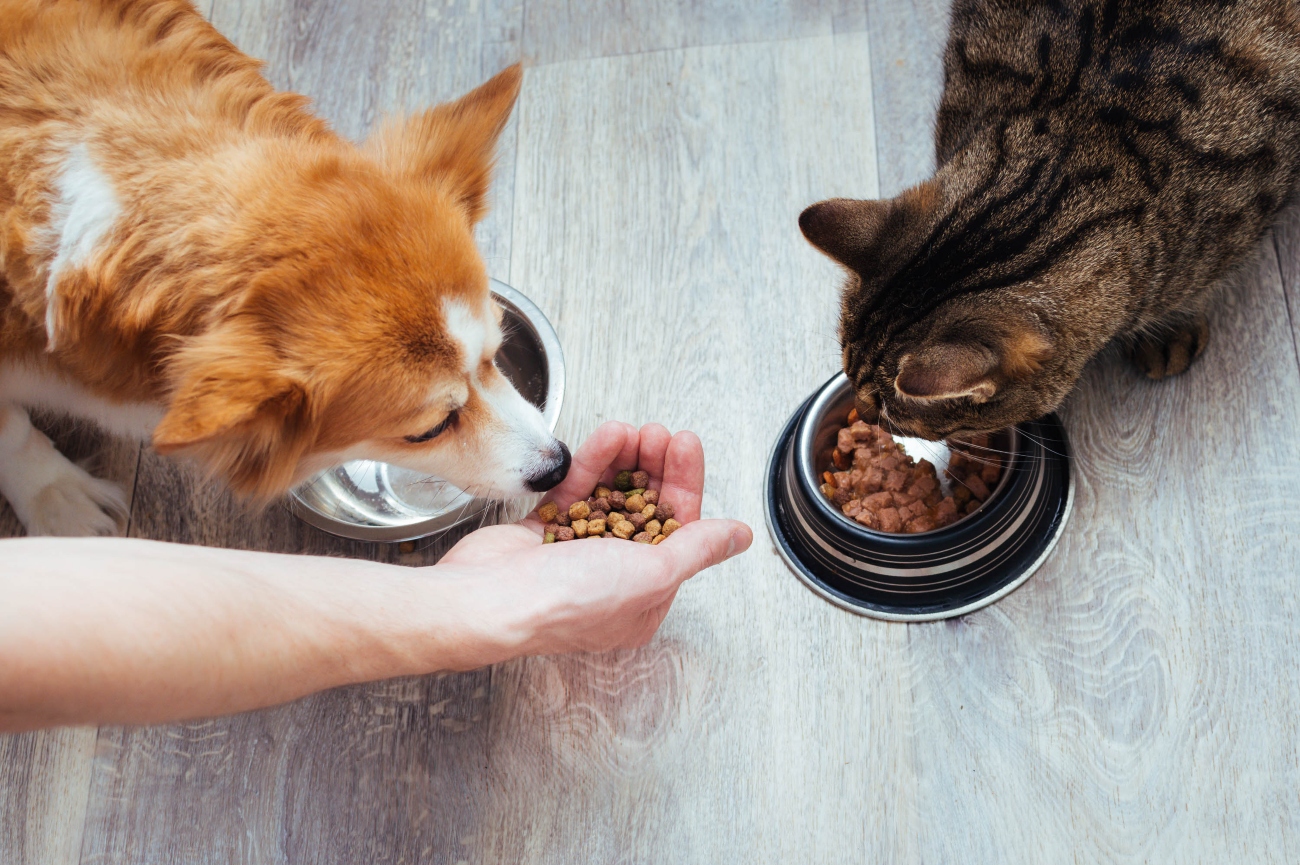
Hand-feeding can also help build a stronger bond between you and your pup.
Taking the time to feed your dog with your hands can help them understand that you are the source of their food. This can help build trust and make your dog understand that you are the one who provides for them which can establish obedience and respect.
Hand-feeding may also be able help with your pup's behavioural issues. If your pup is prone to aggression or anxiety, hand-feeding can help reduce these behaviours.
Taking the time to feed your pup with your hands can help them understand that their dinner time is not a competition or something to be rushed can help calm your anxious dog down as they eat their food at a slower pace.
The hand-feeding element to this can be optional if you feel as though your dog is typically well behaved, but if you feel as though your dog isn’t responding to other areas of training, hand-feeding can really help to strengthen your bond and establish a power dynamic and level of respect between the two of you.
Why you should feed your dog smaller meals more frequently
The benefits of feeding your dog smaller meals more frequently is something that many dog owners have come to appreciate over the years.
Smaller meals more frequently can help to maintain your dog’s ideal body weight, provide them with a steady energy source, and support their overall health and wellness.
For starters, feeding your dog smaller meals more frequently can help maintain ideal body weight. If you are feeding your dog one large meal a day, it can be easy to overfeed them. If they are eating too much, they can become overweight or obese which can lead to a variety of health issues.
By feeding smaller meals more frequently, you can better control the number of calories your dog is consuming (and make your dog less likely to beg for food after their main meal of the evening for example) and help keep them at a healthy weight.
Another benefit of feeding smaller meals more frequently is that it provides your dog with a steady energy source throughout the day.
When you feed your dog one large meal a day, their energy levels can spike and crash. This can lead to lethargy and lack of energy later in the day, which may also affect your pup’s physical and mental health.
Feeding multiple smaller meals throughout the day allows for a steadier source of energy, which can help keep your dog more alert and active throughout the day.
Feeding smaller meals more frequently can help to maintain your dog’s ideal body weight, provide them with a steady energy source, and support their overall health and wellness.
Ultimately, if you’re struggling with your dog’s pacey eating habits, this is something that all dog owners should keep in mind as it may just be the technique that suits your dog the most!
Finding the right insurance for you
It's important to keep an eye on your pup's eating habits. Eating too fast can lead to a range of problems, from bloating to weight gain. That's why it's important to take the time to slow down your pup's eating habits.
In this article, we discussed why does my dog eat so fast and how to stop a dog from eating too fast. We provided you with practical tips and solutions that can help you slow down your pup's eating habits. We discussed using slow-feeder bowls, hand-feeding your pup, and feeding your pup smaller meals more frequently.
If you take the time to implement these solutions, you can help slow down your dog's eating habits which may lead to their overall mood, response to training, and behaviour being positively impacted as well.
Helpful Pages
Recent Posts
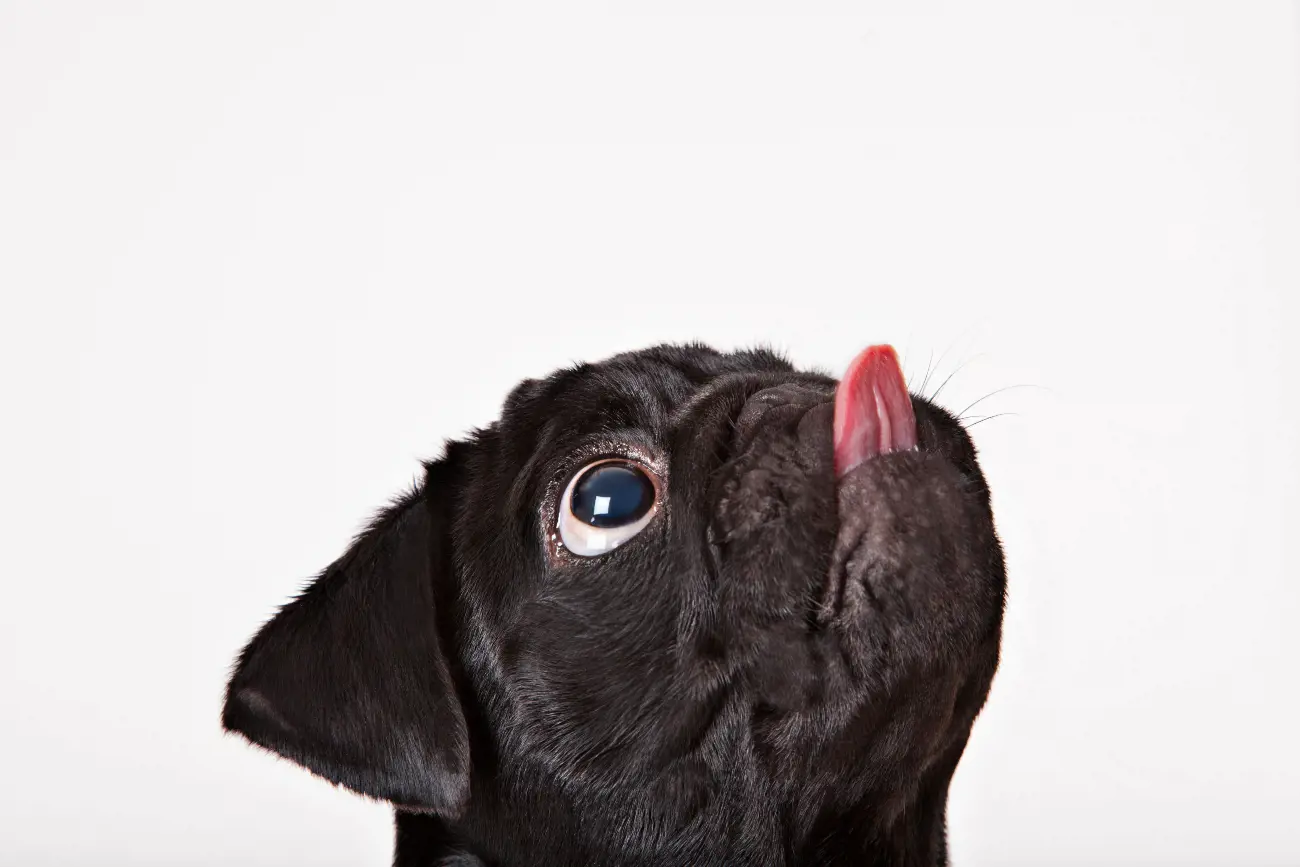
Why do Pugs lick the air?
02/10/24Pet Insurance Quote
- 98% claims paid *
- Claims paid directly to vets
- 24/7 vet video consultations
- Interest free monthly payments

